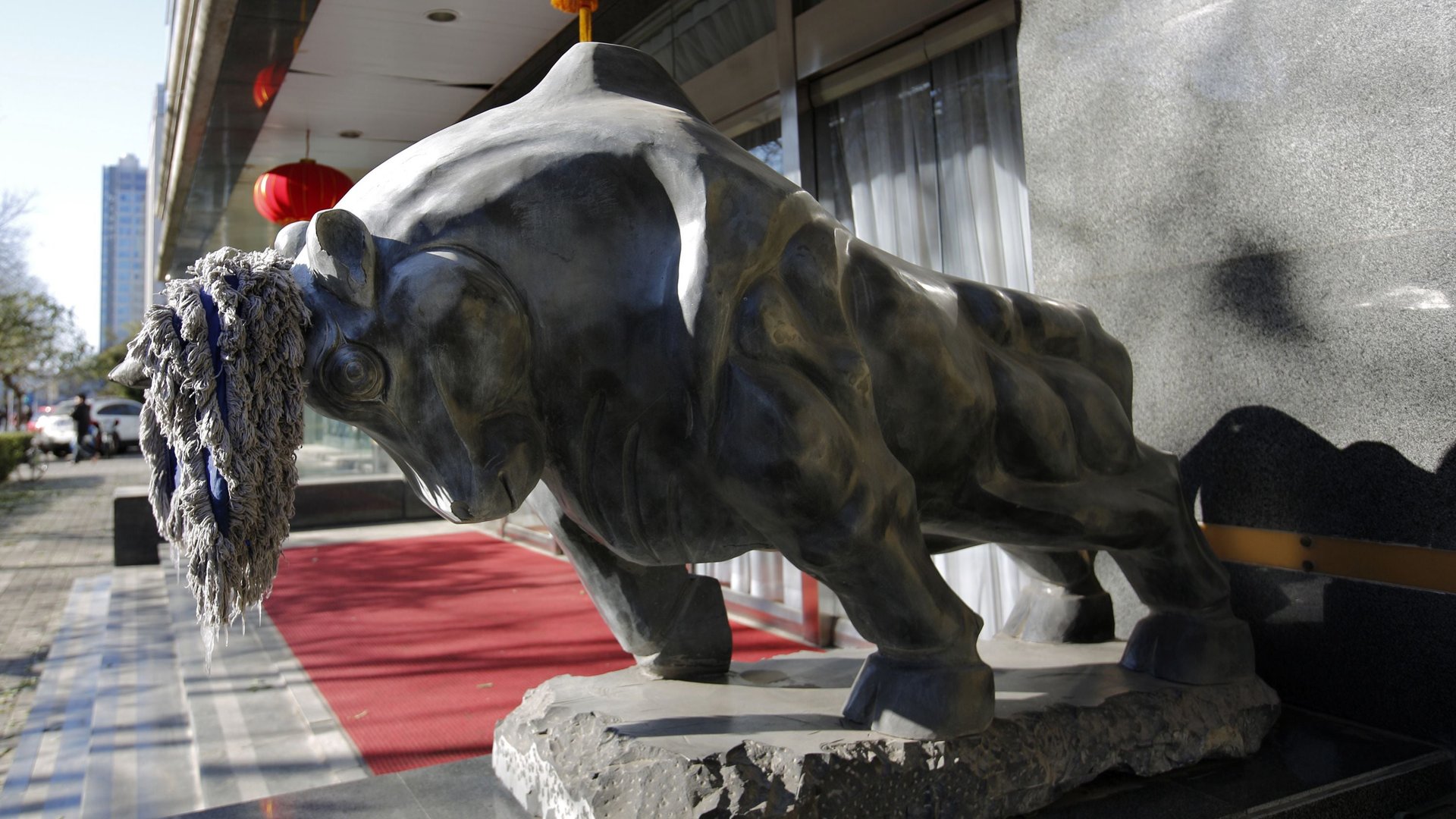What the hell is going on with China’s stock market, charted
In case you turned away from China’s economic carnage for a moment, some surprising news: China’s stock crash has turned itself inside out.


In case you turned away from China’s economic carnage for a moment, some surprising news: China’s stock crash has turned itself inside out.
The Shanghai Composite Index closed out this week up 16% since its July 8 nadir. The benchmark index in Shenzhen, meanwhile, popped a whopping 23%.
The swing is really pretty remarkable, as this chart of the Shanghai Composite’s weekly performance shows vividly:
Of course, the turning point in all this was the Chinese government’s all-out stock-market rescue. Launched July 4, the strategy has three main prongs—two to boost demand, one to limit supply:
- Make banks and other financial institutions push money into margin trading, so investors can boost their stock bets with leverage.
- Force state-owned or -affiliated companies and funds to buy shares, and to assure the market they won’t sell.
- Freeze trading of speculative stocks (and IPOs).
So how’s the Chinese government’s plan playing out? As of July 13, commercial banks had loaned out 1.2 trillion yuan to the China Securities Finance Corp (CSF)—the margin-trading clearinghouse co-owned by the country’s big securities exchanges—reports Caixin. That’s having an obvious effect. Since July 17, nearly 37.5 billion yuan ($6 billion) has gushed back into margin-trading accounts:
The CSF hasn’t just been lending to margin traders, though. The clearinghouse has bought 45 stocks directly from retail and institutional investors, according to calculations by National Business Daily (link in Chinese).
Which brings us to the second point, stock-buying by companies. That too has been going swimmingly. Between July 1 and 23, some 746 Shanghai- and Shenzhen-listed companies shareholders upped stakes by 45 billion yuan, reports China Securities Journal (link in Chinese). Industrial Bank, for instance, snapped up 9.9 billion yuan of its own shares.
Finally, there’s frozen stocks, many of which are the shares of smaller, non-state companies that, due to their volatility, were a margin-trader fave. This tactic has not only prevented margin calls from being triggered; by limiting the supply of stocks that can be traded, it has boosted liquidity to the rest of the market. Yet despite the market’s revival, trading of more than 500 listed companies (link in Chinese) is suspended, down from more than 800 on July 8.
A wholly effective effort on the part of the Chinese government, in short—though maybe a little too effective. The government may be controlling supply and demand now—but what happens once the Shanghai Composite hits the target of 4,500?
The big China stock bet has always been to go long with the confidence that the government wants a bull market, and a bull market it will have. Now that it has successfully re-engineered one, China’s leaders will find it all the tougher to avoid un-engineering it when they decide at last to pull out.